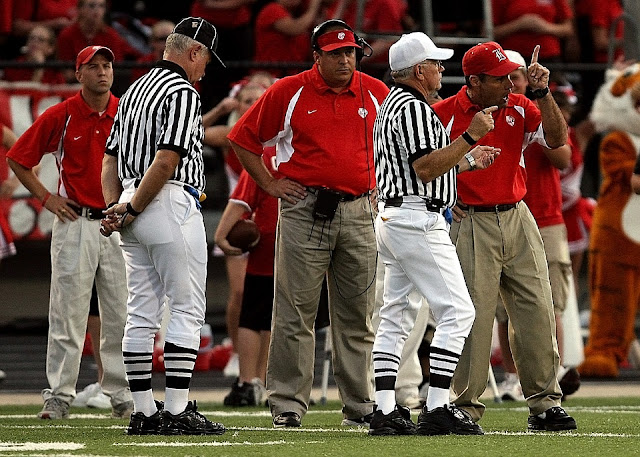WHAT IS
COMMUNICATION?
Communication
is simply the act of transferring information from one place to another.
Although this is a simple
definition, when we think about how we may communicate the subject becomes a
lot more complex. There are various categories of communication and more than
one may occur at any time. The different categories of communication include:
- Spoken or Verbal Communication: face-to-face, telephone, radio or television and
other media.
- Non-Verbal Communication: body language, gestures, how we dress or act - even our scent.
- Written Communication: letters, e-mails, books, magazines, the Internet or via other media.
- Visualizations: graphs and charts, maps, logos and other visualizations can communicate messages.
The desired outcome or goal of any
communication process is understanding.
Senders and receivers of information
are of course vital in communication. In face-to-face communication the roles
of the sender and receiver are not distinct as both parties communicate with
each other, even if in very subtle ways such as through eye-contact and general body language.
There are many other subtle ways
that we communicate with others, for
example the tone of our voice can give clues to our mood or emotional state,
whilst hand signals or gestures can add to a spoken message.
In written communication the sender
and receiver are more distinct. Until recent times, relatively few writers and
publishers were very powerful when it came to communicating the written word.
Today we can all write and publish our ideas online, which has led to an
explosion of information and communication possibilities.
The
Communication Process
A message or communication is sent
by the sender through a communication channel to a receiver, or to multiple
receivers. The sender must encode the message (the information being conveyed)
into a form that is appropriate to the communication channel, and the
receiver(s) then decodes the message to understand its meaning and
significance.
- Misunderstanding can occur at any stage of the communication process.
Effective communication involves
minimising potential misunderstanding and overcoming any barriers to
communication at each stage in the communication process.
- An effective communicator understands their audience, chooses an appropriate communication channel, hones their message to this channel and encodes the message to reduce misunderstanding by the receiver(s).
They will also seek out feedback
from the receiver(s) as to how the message is understood and attempt to correct
any misunderstanding or confusion as soon as possible.
Receivers can use techniques such as
Clarification and Reflection as effective ways to ensure that
the message sent has been understood correctly.
- Communication Channels
Communication theory states that
communication involves a sender and a receiver (or receivers) conveying information
through a communication channel.
- Communication Channels is the term given to the way in which we communicate. There are multiple communication channels available to us today, for example face-to-face conversations, telephone calls, text messages, email, the Internet (including social media such as Facebook and Twitter), radio and TV, written letters, brochures and reports to name just a few.
- Choosing an appropriate communication channel is vital for effective communication as each communication channel has different strengths and weaknesses.
For example, broadcasting news of an
upcoming event via a written letter might convey the message clearly to one or
two individuals but will not be a time or cost effective way to broadcast the
message to a large number of people. On the other hand, conveying complex,
technical information is better done via a printed document than via a spoken
message since the receiver is able to assimilate the information at their own
pace and revisit items that they do not fully understand.
Written communication is also useful
as a way of recording what has been said, for example taking minutes in a
meeting.
- Encoding Messages
All messages must be encoded into a
form that can be conveyed by the communication channel chosen for the message.
We all do this every day when
transferring abstract thoughts into spoken words or a written
form. However, other communication channels require different forms of
encoding, e.g. text written for a report will not work well if broadcast via a
radio programme, and the short, abbreviated text used in text messages would be
inappropriate if sent via a letter.
Complex data may be best
communicated using a graph or chart or other visualisation.
Effective communicators encode their
messages with their intended audience in mind as well as the communication
channel. This involves an appropriate use of language, conveying the
information simply and clearly, anticipating and eliminating likely causes of
confusion and misunderstanding, and knowing the receivers’ experience in
decoding other similar communications. Successful encoding of messages is
a vital skill in effective communication.
- Decoding Messages
Once received, the receiver/s need
to decode the message. Successful decoding is also a vital communication skill.
People will decode and understand
messages in different ways based upon any Barriers
to Communication
which might be present, their experience and understanding of the context of
the message, their psychological state, and the time and place of receipt as
well as many other potential factors.
Understanding how the message will
be decoded, and anticipating as many of the potential sources of
misunderstanding as possible, is the art of a successful communicator.
Receivers of messages are likely to
provide feedback on how they have understood the messages through both verbal
and non-verbal reactions.
Effective communicators pay close
attention to this feedback as it the only way to assess whether the message has
been understood as intended, and it allows any confusion to be corrected.
Bear in mind that the extent and
form of feedback will vary according to the communication channel used: for
example feedback during a face-to-face or telephone conversation will be
immediate and direct, whilst feedback to messages conveyed via TV or radio will
be indirect and may be delayed, or even conveyed through other media such as
the Internet.






0 comments:
Post a Comment